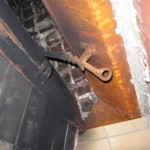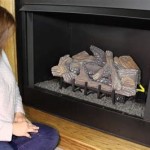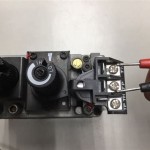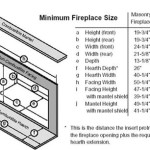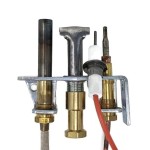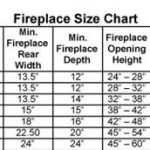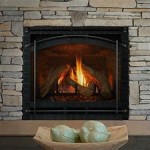Removing Paint From a Brick Fireplace: A Comprehensive Guide
A brick fireplace can be a captivating focal point in a home. However, when covered in paint, its natural beauty is obscured, diminishing its aesthetic appeal and potentially impacting its value. Removing paint from brick requires patience, meticulous execution, and an understanding of the different methods available. The suitability of each method depends on factors such as the type of paint, the condition of the brick, and personal preferences for chemicals and tools.
Before commencing any paint removal process, it is crucial to implement appropriate safety measures. These precautions typically include wearing safety glasses to protect the eyes from debris and chemical splashes, using gloves to safeguard the skin from irritants, and ensuring adequate ventilation to minimize exposure to fumes. It is also advisable to protect surrounding areas with drop cloths to prevent damage from paint chips and cleaning agents.
Understanding the Paint Type and Brick Condition
Identifying the type of paint used on the brick is a fundamental first step. Latex paint, being water-based, is generally easier to remove than oil-based or epoxy paints. The age and condition of the brick also play a significant role in determining the most appropriate removal method. Older, more porous bricks may be more susceptible to damage from harsh chemicals or abrasive techniques. Similarly, bricks with pre-existing cracks or crumbling mortar require a gentler approach to avoid exacerbating the problem.
A simple test can often help determine the paint type. By applying a small amount of denatured alcohol to an inconspicuous area and rubbing it with a cloth, it can be observed whether the paint softens or dissolves. If the paint dissolves readily, it is likely latex-based. If it remains intact, it is probably oil-based or another more resistant type of paint.
Chemical Paint Strippers
Chemical paint strippers are a common method for removing paint from brick. These strippers contain solvents that soften the paint, allowing it to be scraped away. Various types of chemical strippers are available, ranging from those containing harsh chemicals like methylene chloride to more environmentally friendly, bio-based options. Methylene chloride strippers are highly effective but require extreme caution due to their toxicity. Bio-based strippers are generally safer but may require longer application times and multiple applications.
When using chemical strippers, it is imperative to follow the manufacturer's instructions meticulously. The stripper should be applied evenly to the painted surface and allowed to dwell for the recommended time. After the dwell time, the softened paint can be scraped away using a plastic scraper or putty knife. Avoid using metal scrapers, as they can damage the brick surface. Multiple applications may be necessary to remove all layers of paint.
After removing the paint, thoroughly neutralize the brick surface to remove any residual stripper. This is typically done with water or a specific neutralizing agent recommended by the stripper manufacturer. Failure to neutralize the surface can prevent proper adhesion of future coatings or sealants.
Alternative Methods for Paint Removal
Beyond chemical stripping, several alternative methods can be employed to remove paint from brick. These methods often involve mechanical abrasion or heat application. While potentially less harsh than chemical strippers, they still require careful execution to avoid damaging the brick.
One such method is sandblasting, which uses a high-pressure stream of abrasive material to remove the paint. However, sandblasting can be quite aggressive and is generally not recommended for delicate or historic brickwork. It can erode the brick surface, leaving it pitted and susceptible to water damage. If sandblasting is considered, it is crucial to hire a professional with experience in working with brick.
Another alternative is using a heat gun or steam stripper to soften the paint. The heat softens the paint, making it easier to scrape away. This method is generally less damaging than sandblasting but can still cause discoloration or cracking if not used carefully. The key is to keep the heat gun moving and avoid overheating any one area. Steam strippers offer a gentler approach than heat guns, as the steam penetrates the paint and loosens it without the risk of scorching the brick.
Wire brushes, either manual or powered, can also be used to remove paint. However, they can be abrasive and should be used with caution. A soft-bristled brush is preferred to minimize damage. Power tools, such as angle grinders with wire brush attachments, can be effective for removing stubborn paint, but require careful control to avoid gouging the brick surface.
Regardless of the chosen method, the final step involves cleaning the brick surface thoroughly. This typically involves scrubbing with a brush and a mild detergent solution to remove any remaining paint residue or dust. A pressure washer can be used for this purpose, but it is important to use a low-pressure setting to avoid damaging the brick or mortar.
Considerations for Mortar Joints
The mortar joints between the bricks are often more vulnerable than the bricks themselves. Mortar is typically softer and more porous, making it more susceptible to damage from aggressive cleaning methods. When removing paint, it is crucial to avoid excessive abrasion of the mortar joints. This can lead to crumbling, cracking, and water penetration.
When using chemical strippers, ensure that the stripper does not penetrate too deeply into the mortar joints. Apply the stripper selectively and use a small brush to reach into the recessed areas. After removing the paint, inspect the mortar joints for any signs of damage. If necessary, repointing the mortar joints may be required to ensure the structural integrity of the fireplace.
Similarly, when using abrasive methods like sandblasting or wire brushing, take extra care around the mortar joints. Minimize the pressure and avoid prolonged contact to prevent erosion. Repairing damaged mortar joints is an integral part of restoring a brick fireplace and should not be overlooked.

Remove Paint From Brick Part Ii The Reaganskopp Homestead

Taking Paint Off A Brick Fireplace Pt 1 Salt Rook

How To Strip Paint From Brick Fireplace My Alternate Life

How To Remove Paint From A Brick Fireplace Hometalk

How To Strip Paint From Brick Fireplace My Alternate Life

How To Strip Paint From Brick Fireplace My Alternate Life

How To Remove Paint From Brick Without Ruining It Ptr
Removing Paint From Brick Fireplace Diy Home Improvement Forum

How To Strip Paint From Brick Fireplace My Alternate Life

How To Remove Paint From Brick Diy Guide Bob Vila
Related Posts

